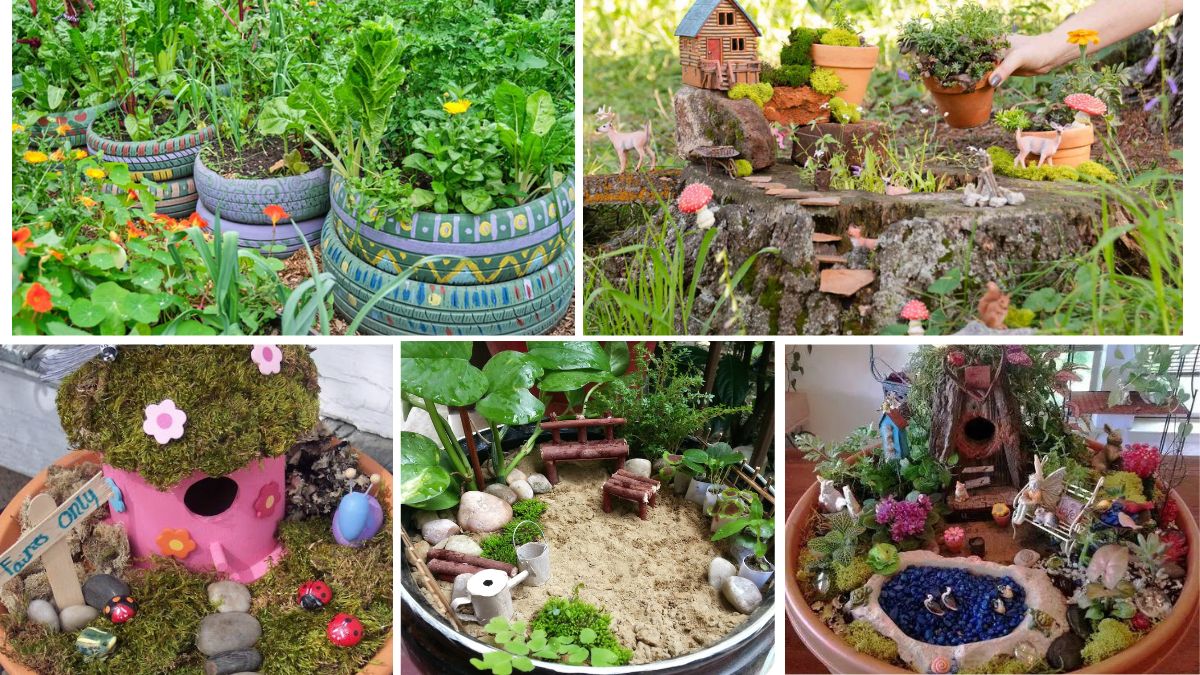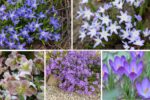In today’s world of environmental awareness, upcycling and sustainability have found their way into every aspect of life—including gardening. One delightful trend that has gained popularity among eco-conscious enthusiasts and urban dwellers alike is creating miniature gardens using recycled items. These tiny, imaginative green spaces are not only charming and creative but also a perfect example of how sustainability and design can go hand in hand.
Whether you’re working with a small balcony, windowsill, or even a tabletop, miniature gardens are an artistic expression of nature in a compact form. And when built with recycled materials, they contribute to waste reduction while showcasing your ingenuity. This article explores inspiring ideas, materials, construction techniques, and benefits of creating miniature gardens using recycled items.
What Is a Miniature Garden?
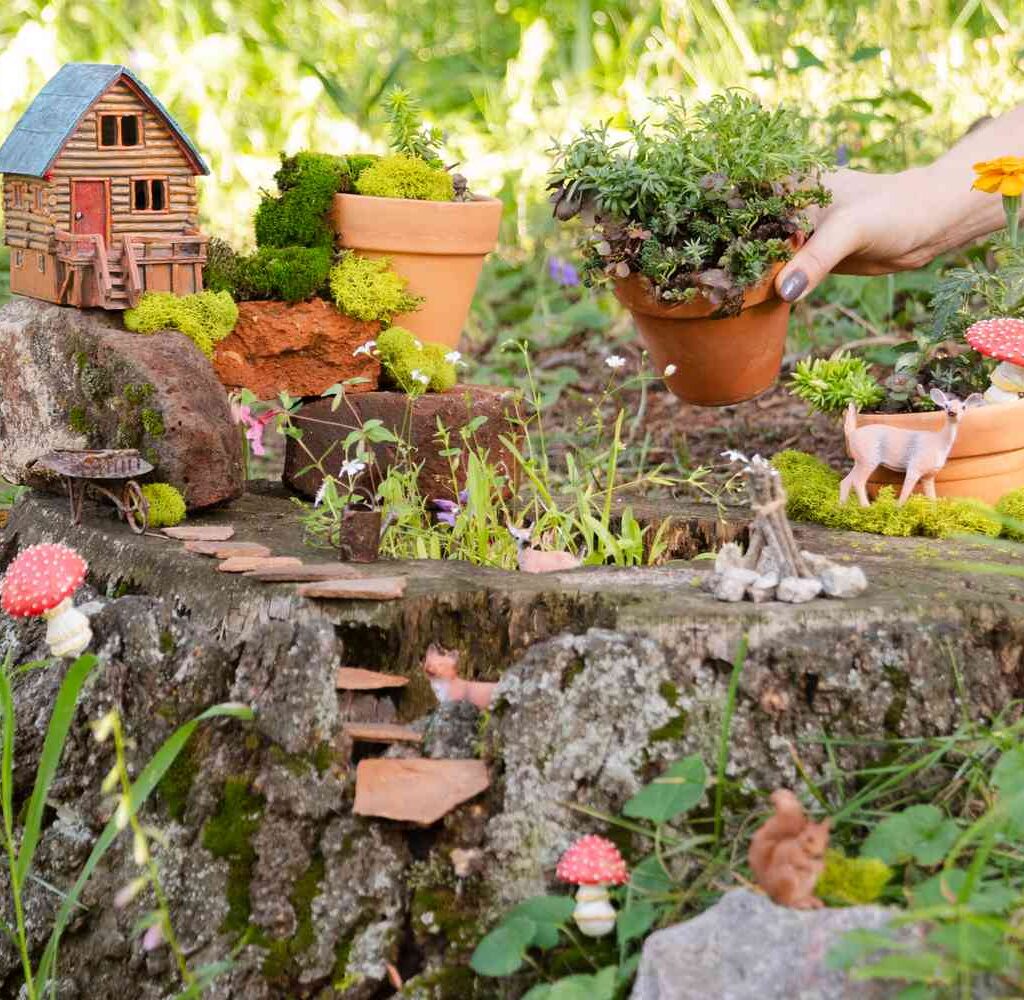
A miniature garden, also known as a fairy garden or container garden, is a small-scale landscape designed to resemble a full-sized garden or natural setting. It often includes:
- Miniature plants and succulents
- Tiny garden décor (benches, houses, fences)
- Pebbles, sand, moss, or mulch
- Containers or reused items that serve as the “landscape base”
These gardens may be functional, decorative, or themed—and when paired with recycled containers and materials, they become eco-friendly masterpieces.
Why Use Recycled Items for Miniature Gardens?
Sustainability
Using discarded or unwanted items reduces waste, saves energy, and gives old materials a second life.
Cost-Effective
Recycled materials are either free or very low-cost, making your garden budget-friendly.
Creative Expression
Repurposing unusual items encourages creativity. Each garden becomes a unique piece of art.
Educational Value
Perfect for kids and school projects, recycled miniature gardens teach environmental responsibility, art, and plant care in one hands-on activity.
Popular Recycled Items to Use in Miniature Gardens
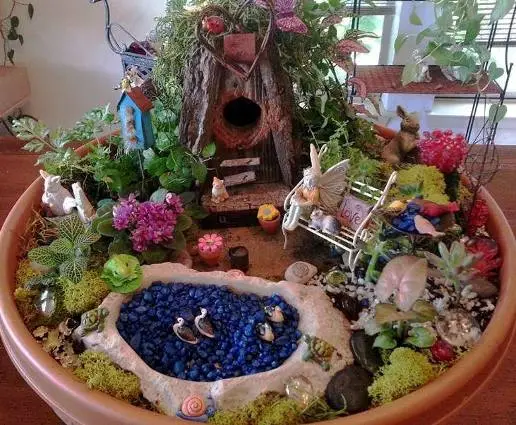
Here’s a list of everyday waste or household items that can be transformed into enchanting garden bases or décor:
| Recycled Item | Miniature Garden Use |
|---|---|
| Broken teacups/mugs | Fairy garden base or succulent planter |
| Worn-out shoes | Whimsical garden containers |
| Old drawers | Layered mini gardens or tiered designs |
| Colanders or strainers | Hanging mini gardens with good drainage |
| Discarded toys (dollhouses, trucks) | Ready-made fairy villages or beds |
| Broken pots | Stacked spiral miniature gardens |
| Plastic bottles | DIY hanging gardens or gnome houses |
| Rusty kitchen tools | Rustic décor elements |
| Egg cartons | Seedling starters or tiny plant beds |
| Tin cans or food containers | Vertical mini gardens or herb containers |
Miniature Garden Design Ideas Using Recycled Materials
1. Teacup Fairy Garden
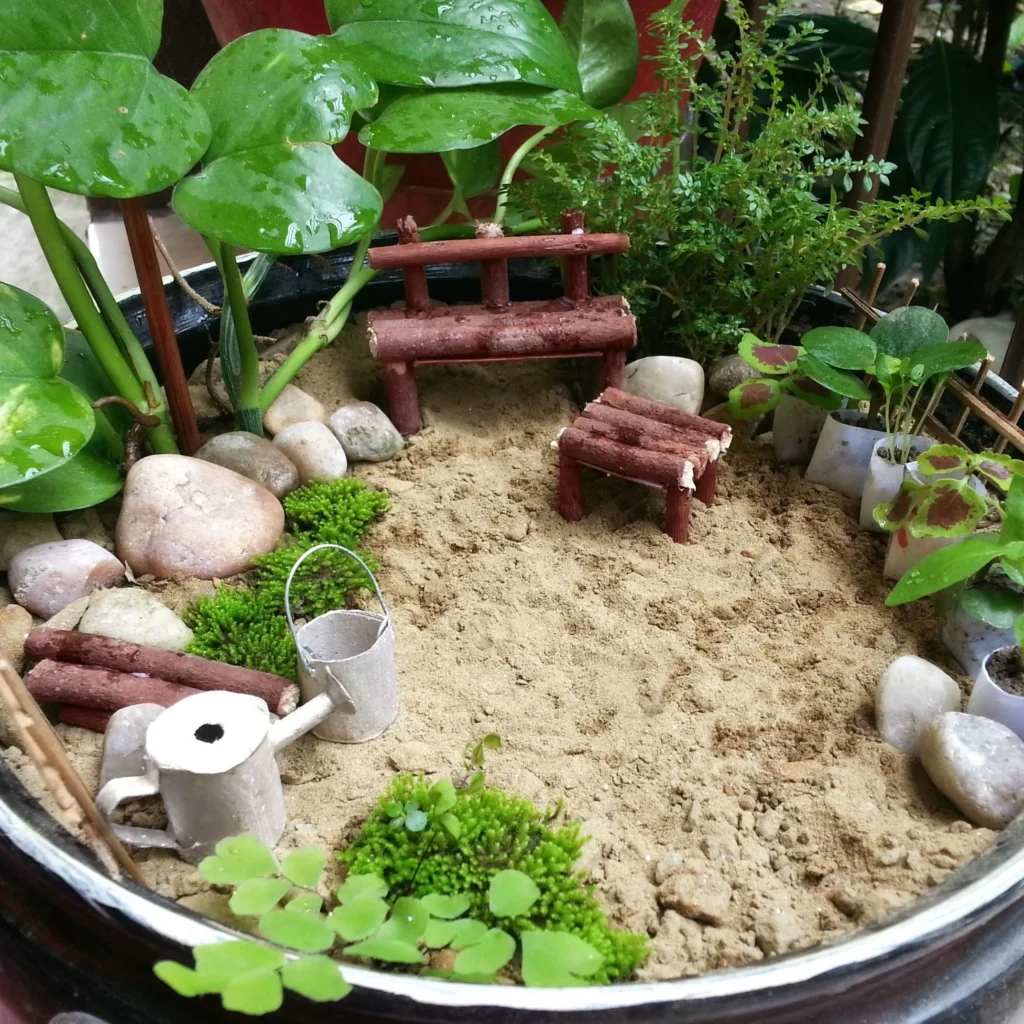
Use an old or chipped teacup and saucer as the base. Fill it with soil, moss, and tiny succulents. Add a button pathway, small twigs as fences, and a pebble swing for an adorable fairy-themed garden.
Recycle elements:
- Broken teacups
- Old buttons
- Beads from broken jewelry
2. Drawer Garden Wonderland
Stack 2-3 old drawers in a step-like formation to create a multi-layered miniature landscape. Each level can represent a different theme—forest, desert, or beach.
Recycle elements:
- Discarded dresser drawers
- Wooden stir sticks (as bridges)
- Bottle caps (mini ponds)
3. Toy Truck Planter
Convert a child’s broken toy dump truck or tractor into a quirky mini garden. Fill the dump section with soil, plant some tiny ground covers, and decorate with twigs or LEGO blocks.
Recycle elements:
- Old toy vehicles
- LEGO figurines
- Gravel from construction leftovers
4. Shoe Garden Cottage
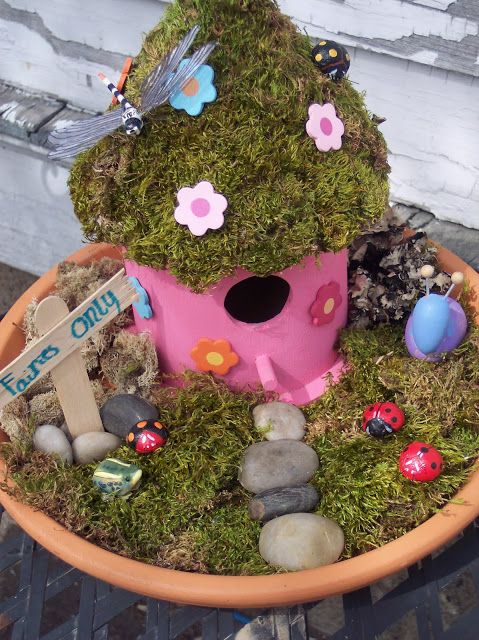
Use a pair of worn-out boots or shoes to plant mini ferns, ivy, or moss. Insert small sticks to build a “door,” and place pebbles as a pathway leading to your shoe cottage.
Recycle elements:
- Old shoes
- Bottle caps (mini stools)
- Matchboxes (tiny doors or windows)
5. Colander Hanging Mini Garden
With excellent drainage and plenty of surface area, old metal or plastic colanders are perfect for hanging miniature gardens. Line it with coconut coir or moss, fill it with soil, and add trailing miniature plants like baby tears or creeping thyme.
Recycle elements:
- Colander or kitchen sieve
- Broken earrings or beads as ornaments
- Old chains for hanging
6. Broken Pot Spiral Garden
A popular idea is to create a spiral fairy garden from a broken clay pot. Use the broken pieces to layer and divide the planter into different levels. Each section can be a unique micro-world.
Recycle elements:
- Broken terracotta pots
- Old marbles (decorative stones)
- Recycled twine (mini clotheslines)
Plants Ideal for Miniature Gardens
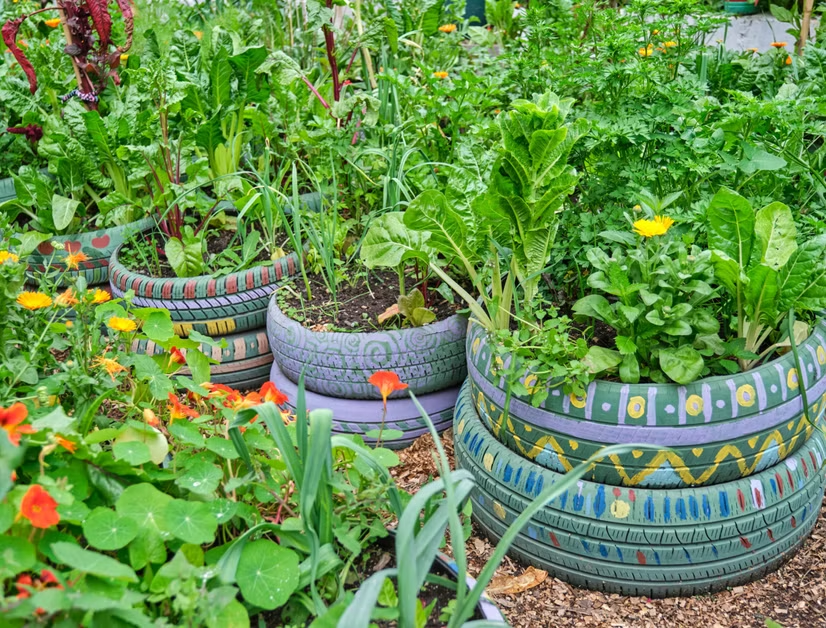
Choose slow-growing, compact, and low-maintenance plants. Consider the container size and drainage while selecting:
| Type | Examples |
|---|---|
| Succulents | Echeveria, Sedum, Haworthia |
| Ground Covers | Baby Tears, Irish Moss, Creeping Thyme |
| Herbs | Mini basil, Oregano, Chives |
| Ferns & Ivy | Mini Maidenhair, Dwarf English Ivy |
| Mini Bonsai | Juniper bonsai, Ficus bonsai |
Step-by-Step: How to Create a Miniature Garden with Recycled Items
Step 1: Choose Your Container
Select a recycled base that fits your space—cup, drawer, shoe, or tin can.
Step 2: Ensure Drainage
If it doesn’t already have holes, drill or add gravel at the bottom to prevent waterlogging.
Step 3: Add Soil
Use well-draining potting mix. For succulents, add sand or perlite.
Step 4: Plan Your Design
Sketch out zones—where the house will go, the path, the plants, and accessories.
Step 5: Plant the Greens
Choose suitable plants based on light exposure and container depth. Place taller ones at the back or center.
Step 6: Decorate
Use bottle caps, popsicle sticks, beads, and stones to create benches, tables, fences, or fairy doors.
Step 7: Water and Maintain
Water lightly and keep it in a partially sunny location. Remove weeds and prune as necessary.
Tips for Long-Lasting Miniature Gardens
- Group by water needs: Place plants with similar requirements together.
- Refresh seasonally: Update accessories and plants based on seasons or holidays.
- Use natural glue: If sticking items, opt for eco-friendly, non-toxic adhesives.
- Label creatively: Add fun plant name labels using painted pebbles or sticks.
Educational and Community Uses
Miniature recycled gardens are great tools for:
- School projects: Teach sustainability, recycling, and plant care.
- Community gardening events: Promote eco-friendly gardening practices.
- Senior therapy: Small-scale, low-maintenance gardens help improve mental well-being.
Environmental Impact
Using recycled materials for gardening:
- Reduces landfill waste
- Saves resources by reusing materials that would otherwise be discarded
- Promotes creative reuse in a sustainable way
- Encourages zero-waste lifestyle habits
Conclusion
Creating a miniature garden using recycled items is an inspiring blend of environmental consciousness and artistic expression. It allows individuals to connect with nature, reduce waste, and engage in hands-on creativity—all in one beautiful little space. Whether you’re a gardening novice, an apartment dweller, or an eco-warrior, this approach is practical, educational, and endlessly fun.
So, the next time you consider throwing away an old shoe, a broken pot, or a cracked teacup—think again. With a little imagination and a handful of plants, you could be crafting your very own enchanting green world—one recycled item at a time.
